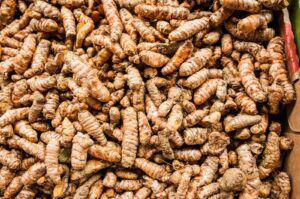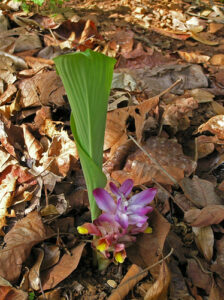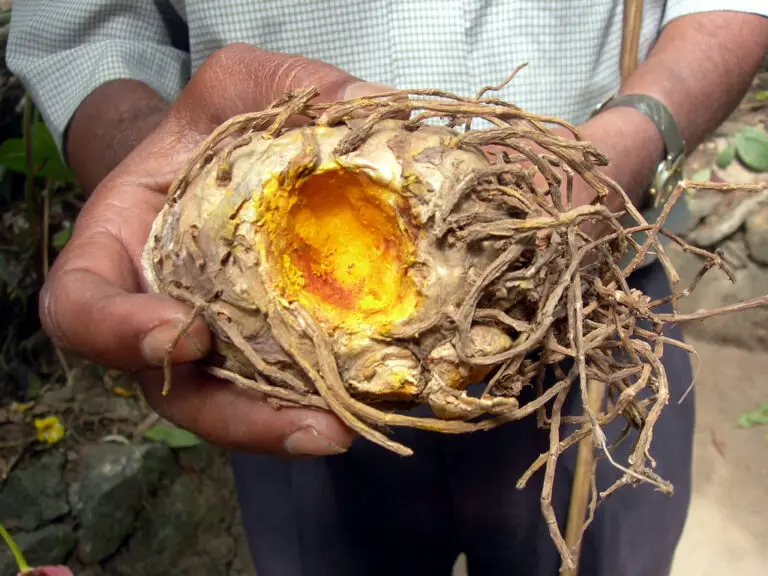This golden-hued herbaceous plant, scientifically known as Curcuma longa, harbors a secret within its rhizomes – the insect repellent properties of turmeric. This article delves into the intriguing world of turmeric, unveiling its potential as a low-cost botanical insecticide and shedding light on its application in crop protection.
In recent times, as we navigate an increasingly regulated world, the quest for natural and eco-friendly pest control methods has gained considerable momentum. Among the array of options, turmeric, a spice treasured for its culinary and medicinal uses, has emerged as a potent contender.
Insect Repellent Properties of Turmeric: A Natural Approach
The Power of Plant Extracts
Turmeric, in its various forms, has long been recognized for its multifaceted properties. From its anti-inflammatory and digestive properties to its antimicrobial effects, this ancient herb continues to be a cornerstone of traditional medicine. However, one of its lesser-known attributes lies in its insect repellent capabilities.

Unveiling the Chemical Composition
The insect repellent properties of turmeric can be attributed to its major constituents, particularly curcuminoid pigments. These compounds exhibit insecticidal activity, making turmeric an invaluable resource in the realm of natural pest management.
Turmeric Extracts in Action
Under laboratory and greenhouse conditions, studies have shown that turmeric extracts effectively deter insect pests. For instance, experiments involving cabbage looper larvae, a notorious agricultural pest, demonstrated significant differences between plant species treated with turmeric extracts and their untreated counterparts.
Different Extracts, Different Effects
Various forms of turmeric extracts have been put to the test, including aqueous, acetone, and petroleum ether extract. The results have been promising, with each exhibiting insect growth inhibitory activity to varying degrees. This diversity in effects offers a spectrum of options for farmers seeking to integrate turmeric into their pest management strategies.
Turmeric: An Eco-Friendly Champion in Crop Protection
Towards Eco-Friendly Pest Control
In an era where the adverse effects of synthetic insecticides on the environment are increasingly evident, the shift towards eco-friendly pest control methods is imperative. Turmeric, with its natural origin and biodegradable properties, stands as a beacon of hope for sustainable agriculture.

Synergistic Combinations for Enhanced Efficacy
Studies have explored the synergistic potential of turmeric with other natural products. Combining turmeric with substances like black pepper has shown promising results in increasing its insecticidal effects. These findings open new avenues for integrated pest management, where turmeric plays a pivotal role.
Turmeric: A Game-Changer in Vegetable Production
The protective effects of turmeric extend to a variety of food crops, with particular emphasis on brassica oleracea var. This crucial vegetable, commonly known as cabbage, faces persistent threats from insect pests. By incorporating turmeric extracts, farmers can safeguard their cabbage plants treated in an eco-conscious manner.
Turmeric: Paving the Way for a Greener Future in Agriculture
Cost-Effective and Accessible
One of the most compelling aspects of using turmeric for pest control is its accessibility and affordability. Turmeric powder, crude essential oil, and turmeric plant extract can be easily procured, offering a low-cost botanical insecticide option for farmers across the spectrum.
Turmeric Oil: A Versatile Tool in Crop Protection
Turmeric essential oils, derived from the rhizomes of Curcuma longa, has shown remarkable potential in pest management. Its application in maize protection experiments yielded promising results, further solidifying turmeric’s status as a formidable natural insecticide.
Final Thoughts: Embracing Turmeric in Pest Management
In an era where sustainable practices are imperative for the longevity of our land and food systems, turmeric emerges as a beacon of hope. Its insect repellent properties, harnessed through various extracts and formulations, present a compelling case for its integration into modern agriculture. By embracing the power of turmeric, we take a significant stride towards an eco-friendly, cost-effective, and highly efficacious approach to pest control. As we navigate the complexities of an increasingly regulated world, turmeric stands as a testament to the potential of natural products in safeguarding our crops and environment.

